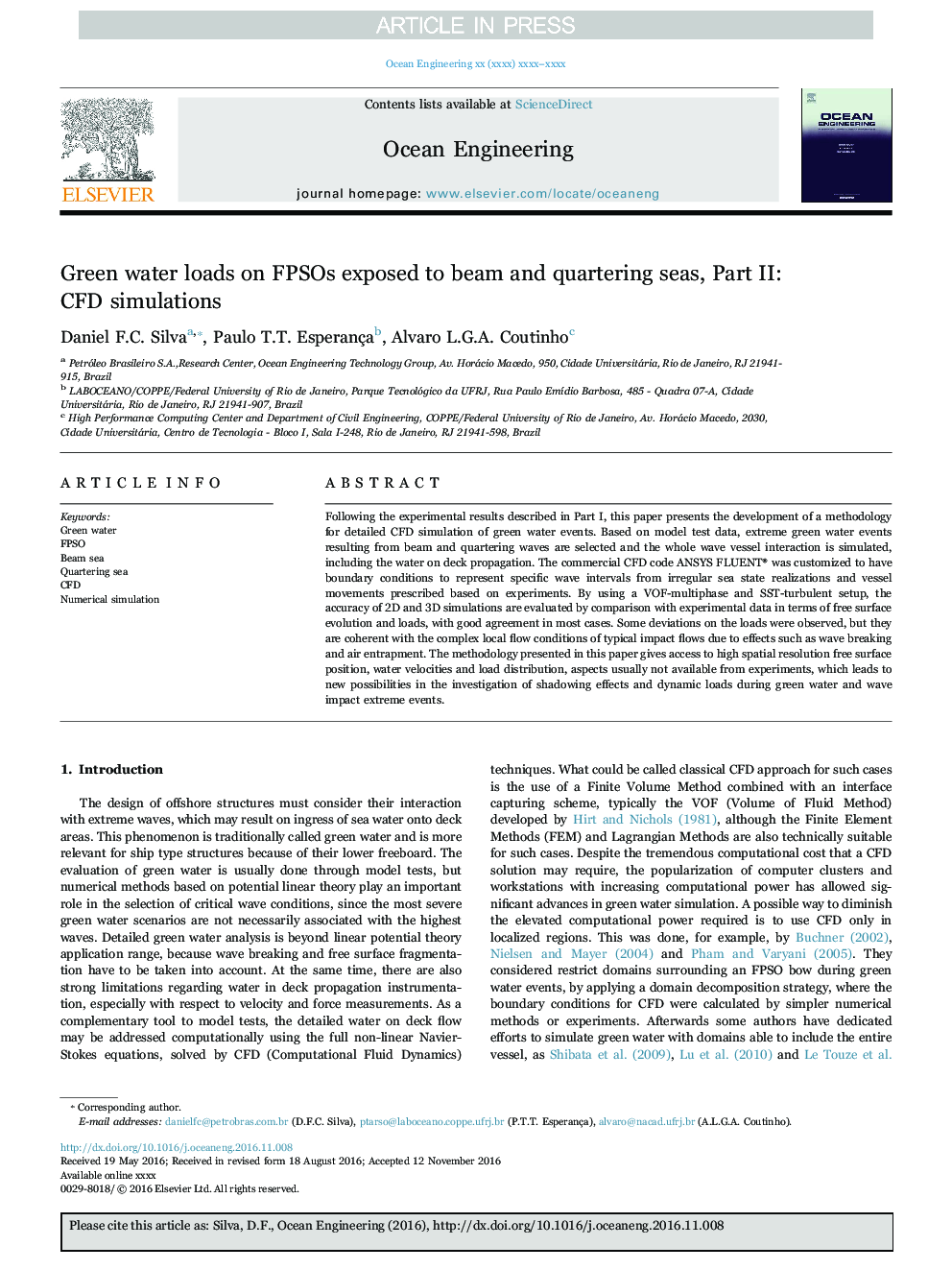| Article ID | Journal | Published Year | Pages | File Type |
|---|---|---|---|---|
| 5474163 | Ocean Engineering | 2017 | 19 Pages |
Abstract
Following the experimental results described in Part I, this paper presents the development of a methodology for detailed CFD simulation of green water events. Based on model test data, extreme green water events resulting from beam and quartering waves are selected and the whole wave vessel interaction is simulated, including the water on deck propagation. The commercial CFD code ANSYS FLUENT® was customized to have boundary conditions to represent specific wave intervals from irregular sea state realizations and vessel movements prescribed based on experiments. By using a VOF-multiphase and SST-turbulent setup, the accuracy of 2D and 3D simulations are evaluated by comparison with experimental data in terms of free surface evolution and loads, with good agreement in most cases. Some deviations on the loads were observed, but they are coherent with the complex local flow conditions of typical impact flows due to effects such as wave breaking and air entrapment. The methodology presented in this paper gives access to high spatial resolution free surface position, water velocities and load distribution, aspects usually not available from experiments, which leads to new possibilities in the investigation of shadowing effects and dynamic loads during green water and wave impact extreme events.
Related Topics
Physical Sciences and Engineering
Engineering
Ocean Engineering
Authors
Daniel F.C. Silva, Paulo T.T. Esperança, Alvaro L.G.A. Coutinho,
